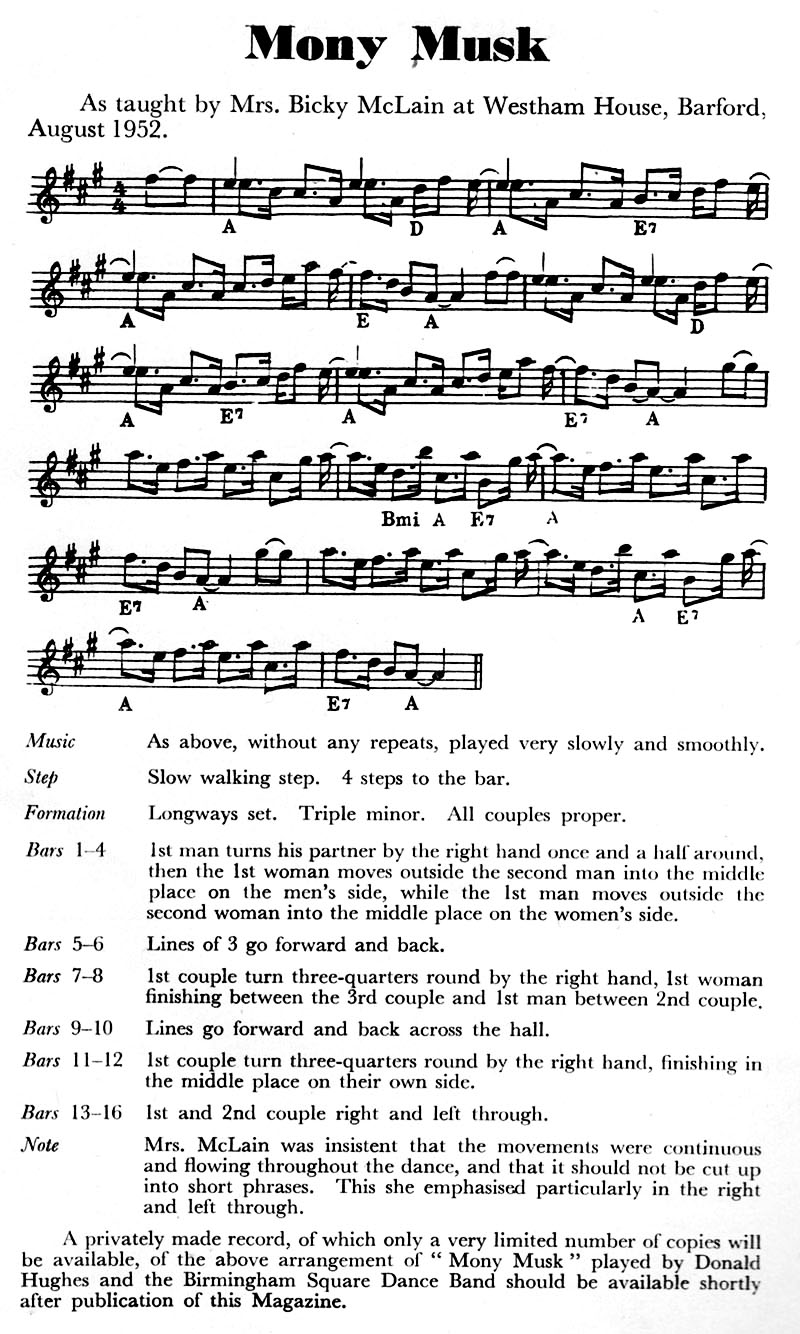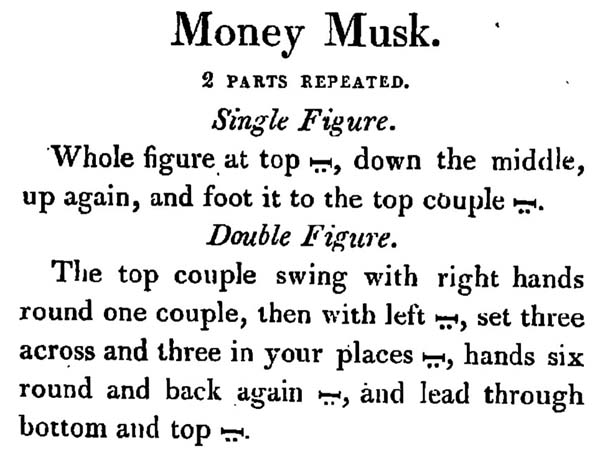Original page from English Dance & Song, Aug. Sept. 1953

Back to Dance Index
| Old 32 Bar Version | |
| A1 |
#1s Allemande Right 1 & 1/2 (about once then Pull By Right) (8)
#1s Cast Down one place (#2s Move Up) to the Middle of Side Lines of Three (8) |
| A2 |
Lines Go Forward & Back (with stepping) (8)
#1s Allemande Right 3/4 and fall back to the Middle of Head Lines (8) |
| B1 |
Lines Go Forward & Back (with stepping) (8)
#1s Allemande Right 3/4 and fall back into Progressed, Proper positions (8) |
| B2 | Top Four: Right & Left Through x2 (16) (Same Gender - Eyes Only, or arms around waists) |
| Modern 24 Bar Version | |
| A |
#1s Allemande Right 1 & 1/2 (about once then Pull By Right) (8)
#1s Cast Down one place (#2s Move Up) to the Middle of Side Lines of Three (4) Lines Go Forward & Back (with stepping) (4) |
| B |
#1s Allemande Right 3/4 (slow) and fall back to the Middle of Head Lines (8)
Lines Go Forward & Back (with stepping) (4) #1s Allemande Right 3/4 (fast) and fall back into Progressed, Proper positions (4) |
| C | Top Four: Right & Left Through x2 (16) (Same Gender - Eyes Only, or arms around waists) |


I'd love to hear from you if you know anything more about this dance, its composer, its style, or its history.
Feedback is very welcome on any aspect of these dances or Web pages.
Please contact John Sweeney with your comments.
